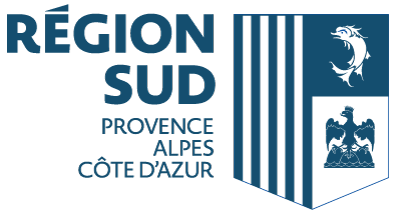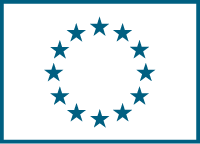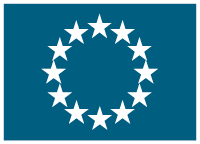ChildProtect-Life â Protecting Children's Health from Endocrine Disrupting Chemicals
(ChildProtect-Life)
Date du début: 1 juil. 2013,
Date de fin: 31 déc. 2015
PROJET
TERMINÉ
Background
Data from numerous reproductive and developmental toxicity tests, which have been increasingly performed from the 1960s onwards, have brought to light a significant health problem: a large number of chemicals are affecting the endocrine system and have an adverse effect the reproductive organs. Ample evidence of endocrine disruption in wildlife is available, while the mechanisms of this disruption have been demonstrated in animal testing.
Furthermore, the rapid increase in the incidence of testicular cancer and deteriorating semen quality along with the emerging reproduction problems of animals, have been linked to possible developmental endocrine disruption. These links were outlined in the report of the European Environment Agency, Weybridge+15, a report on the impact of endocrine disrupters chemicals (EDCs) on wildlife, people and their environments that was published early 2012. EDCs, such as pesticides (vinclozolin, flutamide), food contact materials (bisphenolA), many plastic-softeners (phthalates) and brominated flame retardants have shown to be able to change transgenerational markers on the DNA (epigenetic markers).
The European Commissionâs DG Environment is focussing on regulations in the area EDCs. The Commission has identified EDCs as an emerging issue in need of strengthened implementation measures through, among others, the EU chemicals directive (REACH) and plant protection legislation. Criteria for what constitutes an EDC could also apply to other EU directives, such as those on cosmetics and toy safety.
Objectives
The ChildProtect-Life project aimed to speed-up implementation of EU environmental regulations on the substitution of EDCs in line with the EU 2020 goal of minimising the adverse effects of chemicals on public health.
The project aimed to develop innovative and multi-sectorial modular actions in the Dutch/Flemish-speaking Member States and at Brussels-based EU institutions. These modules would speed-up policy measures and voluntary actions to protect children and pregnant women in particular from harmful EDCs, that would also be replicable in other Member States.
The specific project objectives were to:
Provide information to policy-makers to help them strengthen implementation of EU chemicals and plant protection regulation thus speeding up the substitution of products containing EDCs;
Increase voluntary substitution by the business sector of products containing EDCs;
Increase access to consumer information on EDCs effecting a change of consumption patterns and increasing acceptance for policy measures on EDC substitution; and
Create a multi-sectorial âHealth Sector Allianceâ, involving health experts and health insurance companies that have an interest in preventing the health impact of EDC exposure.Results
The ChildProtect-Life project directly informed 1 500 policy-makers in the Netherlands, Flanders and elsewhere in the EU, while indirectly informing a further 200, about the problem of Endocrine Disrupting Chemicals (EDCs). It made clear policy recommendations on numerous occasions. This advocacy work ensured that the topic of EDCs stayed on the political agenda, resulting in an economic impact assessment and increased policy action at national level. These outcomes should contribute in the near future to EDC regulation under REACH.
The platform tool developed by PAN and other NGOs within the EDC-Free-Europe coalition enabled 20 000 (out of 27 000 people invited) to respond to the EC public consultation on EDCs. The beneficiaries are continuing to work on this issue after the project.
The project furthermore provided information to 30 socially responsible companies in the baby product sector and to eight food retailers and restaurant chains. The co-ordinating beneficiary, WECF, found two commercial investors to sell its EDC-free baby box. Also, a safe toys exhibition was launched, attracting 45 000 visitors. It will continue to feature on an annual basis the knowledge products developed by the project. It will also expand to other Member States.
The project has made many businesses aware of EDC-free alternatives and created a movement to phase out EDCs through voluntary actions, which will hopefully speed up the regulation. An overall increased interest from businesses is reflected in the agenda of the half-yearly REACH mini-symposia. Less progress, however, was made in the food sector, although the actions of the projects have increased consumer access to available and understandable information on EDCs in food, as well as textiles and toys. It achieved this goal by producing and disseminating several awareness-raising guides. Moreover, the project created a large range of publications, brochures, petition and knowledge products, reaching around 600 000 consumers. These all remain available online on the websites of the project and its beneficiaries. A film about the impact of EDCs on pregnancy was downloaded 1 000 times every day.
Additionally, two health expert committees were created, one in the Netherlands and one in Flanders. These consist of experts who lobby policy-makers, respond to questions from the media, and provide relevant feedback on different awareness-raising tools. These committees also ensure a stronger collaboration among health professionals themselves and cooperation on position papers. It was not possible, however, to include representatives from health insurance companies as their mandates no longer include health risk prevention.
Following TV interviews with two project experts, parents groups launched a petition signed by several thousand people that was scheduled to be handed over to the Dutch ministry of health in August 2015. The petition called for all neonatal care departments in all Dutch hospitals to substitute EDC materials.
The project, however, only partially achieved its objectives and was terminated earlier. Nevertheless, the beneficiaries and their partners will further advance their work on EDCs and pesticide. They will continue to distribute relevant brochures, publications, policy papers to consumers in at least 10 other Member States. Moreover, the project has resulted in long-lasting networks of associations that are continuing to promote EDC substitution.




